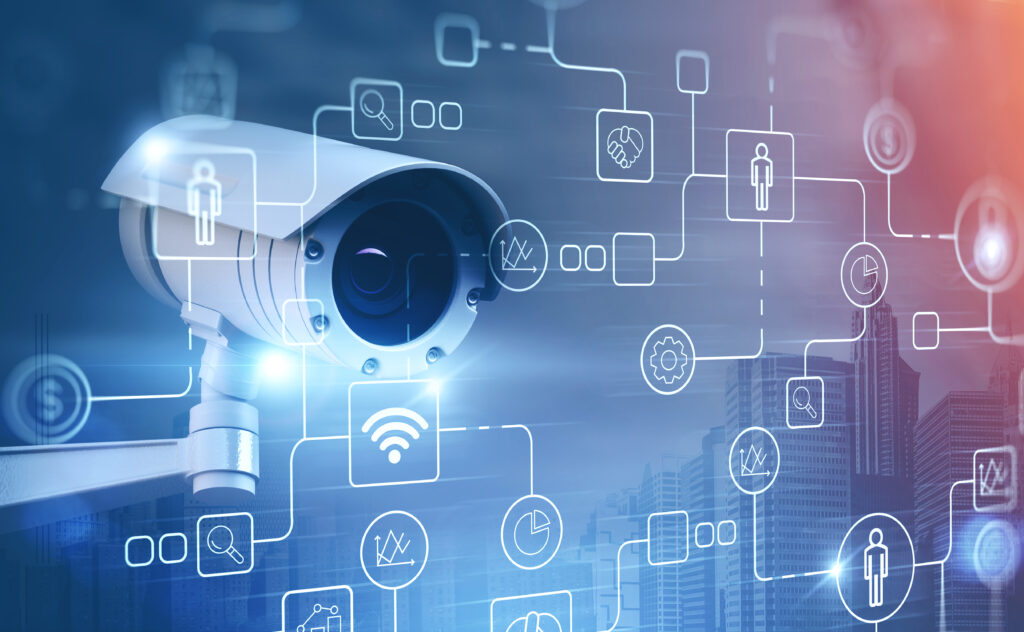The threat of an active shooter is a constant concern for schools, workplaces, and public spaces. One way to protect these areas is to use an active shooter detection system to quickly identify and respond to these events. To do so, these systems utilize methods such as sound detection, artificial intelligence, and real-time alerts to law enforcement, providing a critical layer of security in emergency situations.
Read on to learn how active shooter detection systems enhance safety and how insurance can be an additional layer of protection in the aftermath of an active shooter incident.
How active shooter detection systems work
Active shooter detection systems are advanced technologies that can identify the sound of gunshots and immediately notify law enforcement and building occupants. These systems often integrate with existing security infrastructure, such as surveillance cameras and alarm systems, to enhance their effectiveness.
- Sound detection: Some systems use acoustic sensors to detect gunfire. Once a gunshot is detected, the system can triangulate the location and alert law enforcement and building security personnel. For instance, the Mall of America is implementing gunshot geolocation technology to increase security after a past incident of gunfire inside the mall.
- Artificial Intelligence: AI-powered systems can analyze video feeds from security cameras to identify potential threats. The AI can distinguish between normal activity and suspicious behavior, such as someone carrying a weapon. At Miami’s Frost Museum of Science, AI monitors cameras for weapon detection and alerts security if a threat is identified.
- Panic alarms: Some schools use panic alarm systems that staff can activate during an emergency. These systems send immediate alerts to law enforcement and initiate lockdown procedures. At Apalachee High School in Georgia, a newly implemented panic alarm system was credited with saving lives during a recent shooting.
Read more: The Growing Role of AI in Active Shooter Prevention
How active shooter detection systems enhance safety
Immediate response is one of the key benefits of active shooter detection systems, reducing response times by providing real-time alerts to law enforcement and allowing for quicker intervention. This rapid response can be crucial in minimizing casualties. Enhanced security is another advantage, as these systems can integrate with existing security measures, such as surveillance cameras and access control systems, creating a comprehensive security solution.
One often overlooked benefit is that active shooter detection systems provide peace of mind. Knowing that measures are in place to detect and respond to an active shooter can reassure students, employees, and visitors. This sense of security is invaluable in fostering a safe and productive environment. Systems can also be implemented in various environments, such as:
- Schools: Many educational institutions are adopting these systems to enhance student and staff safety. For example, the Lamar Consolidated Independent School District in Texas has deployed Athena’s Weapons Detection Systems across its campuses to scan for concealed weapons and improve overall security.
- Public Places: Locations such as malls, museums, and theaters can benefit from these systems (such as the previously discussed Mall of America).
- Workplaces: Businesses and corporate offices increasingly recognize the importance of active shooter detection systems in protecting employees and visitors.
What to look out for in active shooter detection systems
The key features to look out for include effective integration with law enforcement, advanced AI and machine learning capabilities, and an interface that the appropriate personnel can use.
Ensure a system can send real-time alerts to local police and security teams to provide the fastest response time possible. Check for AI capabilities that improve detection accuracy and reduce false alarms (such as the ability to differentiate between a police officer protecting people at a mall and an actual threat), and stress test the system’s interface with security personnel. The right people should be able to utilize and interpret information to effectively respond in an emergency.
Also read: Violent Crime Victim Compensation: What Assistance Can Victims of Active Shooters Expect?
Crisis management and insurance
Implementing active shooter detection systems is a proactive step towards crisis management, but organizations also need comprehensive insurance coverage to mitigate the impact of such incidents.
McGowan Program Administrators (MPA) offers Crisis Management (Active Shooter & Workplace Violence Insurance) that provides extensive protection, including medical and counseling benefits, liability coverage, and business interruption expenses due to acts of workplace violence or deadly weapon attacks. This program is designed to support a wide range of businesses and institutions, ensuring they are prepared for various attack types, from firearm assaults to knife and vehicular attacks.
By integrating advanced active shooter detection systems and securing robust insurance coverage, organizations can create safer environments and be better prepared to handle the aftermath of such tragic events. Contact us today to learn more about extensive Crisis Management Insurance.


